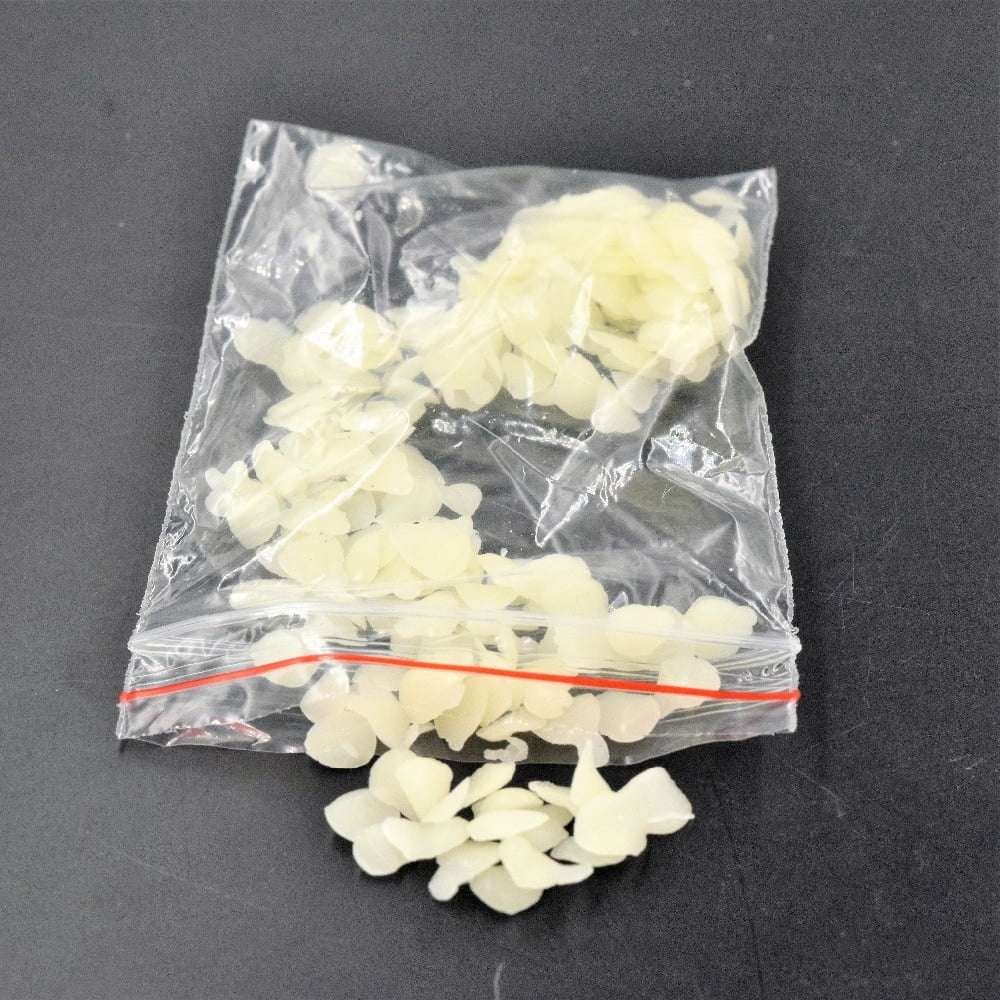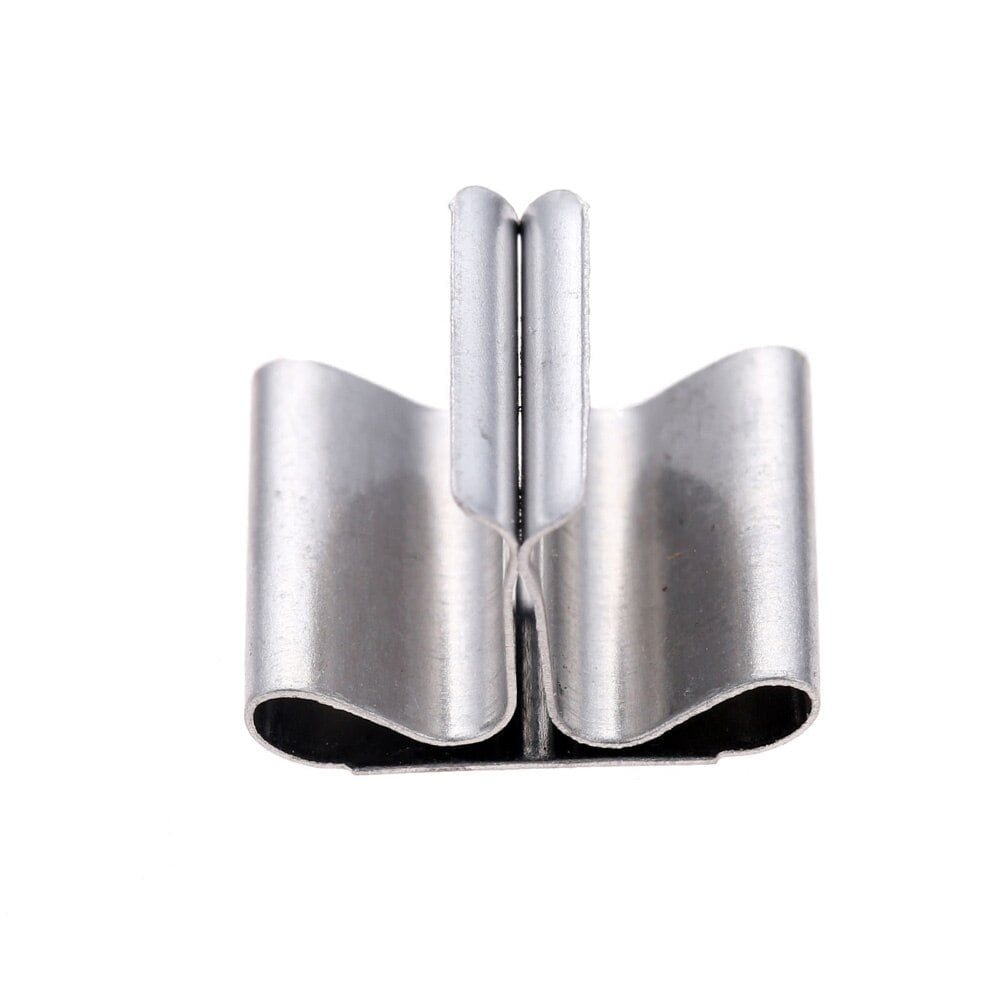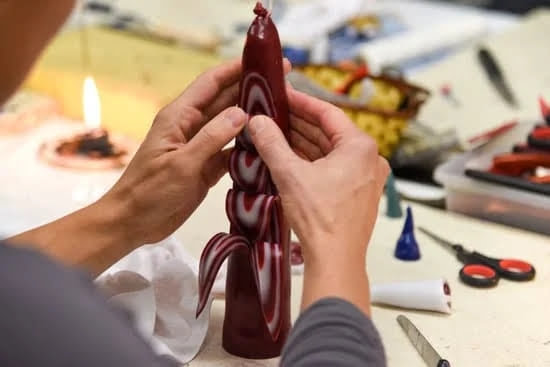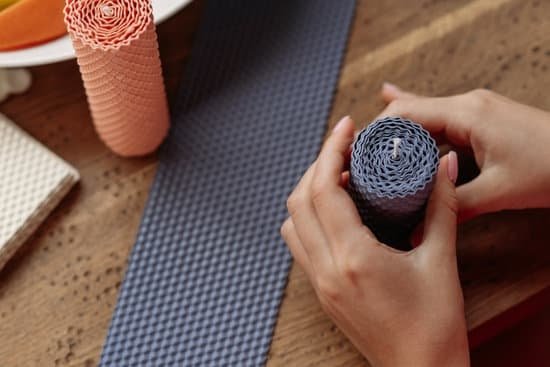Woodwick candles have become increasingly popular due to their unique aesthetic appeal and soothing crackling sound when lit. Making woodwick candles allows you to customize the scent, color, and decorative elements to create a one-of-a-kind home fragrance experience. In this article, we will explore the art of making woodwick candles, from choosing the right supplies to troubleshooting common issues and reaping the benefits of creating your own candles.
When it comes to making woodwick candles, the possibilities are endless. By carefully selecting the wax, wick, and fragrance, you can create a personalized candle that suits your taste and style. Whether you prefer a subtle floral scent or a vibrant fruity aroma, making woodwick candles gives you the creative freedom to craft a truly unique product.
In this comprehensive guide, we will take you through the step-by-step process of making woodwick candles, as well as provide valuable tips for achieving the perfect scent and color. From adding decorative elements like dried flowers, herbs, and glitter to addressing common issues such as cracks and uneven burning, this article will equip you with all the information you need to embark on your candle-making journey.
Choosing the Right Supplies
When it comes to making woodwick candles, it’s essential to choose the right supplies in order to achieve the perfect result. From selecting the right wax to finding the perfect fragrance, each element plays a crucial role in creating a beautiful and aromatic woodwick candle.
Here are some key considerations when choosing the right supplies for making woodwick candles:
- Wax: The type of wax you use will greatly affect the appearance and burning properties of your woodwick candle. Common options include soy wax, paraffin wax, and beeswax. Each type has its own unique characteristics, so it’s important to consider factors such as burn time, scent throw, and environmental impact when making your selection.
- Wick: The wick is another critical component of a woodwick candle. Woodwick candles are known for their crackling sound when burning, so choosing the right wooden wick is essential. It’s important to select a wick that is appropriately sized for your candle container and can create a clean and even burn.
- Fragrance: The fragrance you choose will ultimately determine the overall scent of your woodwick candle. Whether you prefer floral, fruity, or earthy scents, there are countless fragrance options available. When selecting a fragrance oil, be sure to consider its compatibility with the chosen wax and its strength when burned.
By carefully considering these key elements – wax, wick, and fragrance – you can ensure that you are well-equipped to embark on the journey of making woodwick candles at home. With the right supplies in hand, you’ll be ready to create beautifully fragrant and visually stunning woodwick candles that are perfect for any occasion.
Step-by-Step Guide to Creating Woodwick Candles
Gathering Your Supplies
Before you start making woodwick candles, it’s important to gather all the necessary supplies. You will need wax, wick, fragrance oil, a pouring pot, a double boiler, a thermometer, and containers for your candles. It’s also important to have a workspace that is well-ventilated and free from any flammable materials.
Melting the Wax
The first step in making woodwick candles is melting the wax. Use a double boiler to melt the wax flakes, and be sure to monitor the temperature with a thermometer to ensure it doesn’t get too hot. Once the wax is completely melted, you can add your chosen fragrance oil and stir it in gently. This is also the time to add any candle dye if you want colored candles.
Assembling the Woodwick
While the wax is cooling slightly but still liquid, it’s time to prepare your containers and woodwicks. Place the woodwick in the center of each container and use a wick holder or pencil to keep it centered. Then carefully pour the wax into each container, ensuring that the wick stays centered.
Making woodwick candles can be both an enjoyable hobby and a creative outlet. By following these step-by-step instructions and using high-quality supplies, you can create beautiful and fragrant woodwick candles that will enhance any space in your home. Enjoy experimenting with various scents, colors, and decorative elements to make your creations truly unique.
Tips for Achieving the Perfect Scent and Color
When it comes to making woodwick candles, achieving the perfect scent and color is essential for creating a beautiful and inviting candle. The scent of a candle can set the mood in a room, and the color can contribute to the overall ambiance. Here are some tips for achieving the perfect scent and color when making woodwick candles.
First, when selecting fragrances for your woodwick candles, it’s important to choose high-quality fragrance oils that are specifically designed for use in candles. These oils are formulated to be safe and long-lasting, providing a strong scent throw when the candle is burned. It’s also important to consider how different scents complement each other if you plan on blending fragrances to create unique scent combinations. Experimenting with different fragrance combinations can lead to delightful results.
In addition to selecting the right fragrance oils, achieving the perfect color for your woodwick candles is also important. When choosing candle dyes or pigments, it’s essential to follow the recommended usage rates provided by the manufacturer to ensure that the colors are vibrant and consistent throughout the candle.
Keep in mind that certain wax types may affect how colors appear, so testing different dye concentrations on a small scale can help determine the best color outcome for your specific wax type.
Finally, allowing your candles to cure for at least 24 hours before burning them will give the fragrance and color time to fully develop within the wax. This patience will ensure that you achieve not only a visually appealing candle but also one that fills your space with a delightful aroma when lit.
By following these tips and experimenting with different fragrances and colors, you’ll be well on your way to creating woodwick candles that are as visually stunning as they are aromatic.
Adding Decorative Elements
Choosing the Right Decorative Elements
When making woodwick candles, adding decorative elements can elevate the visual appeal of your creation. Dried flowers, herbs, and glitter are popular choices for adding a unique touch to your candles. When selecting decorative elements, opt for items that are non-flammable and will not produce excessive smoke when burned.
Consider using dried lavender, rose petals, or chamomile for a natural and soothing aesthetic. Additionally, carefully selected edible glitter can add a touch of whimsy to your candles without compromising safety.
Application Techniques
Once you have chosen your decorative elements, it’s important to apply them effectively to your woodwick candles. For dried flowers and herbs, gently press them into the surface of the candle while the wax is still soft but slightly firm. Be mindful of the placement and ensure that they are evenly distributed around the candle for a balanced look.
If you’re opting for glitter, consider sprinkling it onto the surface of the candle while rotating it to achieve an even coverage. Alternatively, you can also create patterns and designs with different colors of glitter for a more intricate finish.
Considerations for Burning
While decorative elements can enhance the overall aesthetic of your woodwick candles, it’s essential to consider their impact on burning performance. Ensure that any added decorations do not obstruct the wick or create an uneven burn. Before lighting your candle, trim any protruding dried flowers or herbs to prevent potential obstructions.
It’s also important to note that some decorative elements may affect the scent throw of your candle as they burn. Experiment with different combinations and quantities to strike a balance between aesthetics and functionality.
By considering these factors when adding decorative elements to your homemade woodwick candles, you can create visually stunning creations that also provide a delightful sensory experience when lit.
Troubleshooting Common Issues
When making woodwick candles, it’s common to encounter issues such as cracks in the candle, uneven burning, and fading of the scent. These problems can be frustrating for beginners, but with the right knowledge and techniques, they are easily avoidable.
One of the most common problems with woodwick candles is the formation of cracks in the wax. This issue usually occurs when the wax cools too quickly after pouring. To prevent this from happening, it’s important to ensure that the temperature of the room where you are making the candles is consistent and free from drafts. Additionally, using a heat gun or hairdryer to gently warm the surface of the candle after pouring can help prevent cracks from forming.
Uneven burning is another issue that candle makers often face. This occurs when the wick is not properly centered in the candle or when there are air pockets in the wax. To avoid this problem, make sure to carefully center your wick before pouring the wax and gently tap the container on a hard surface to release any trapped air bubbles.
Finally, scent fading can be disappointing after putting so much effort into making a woodwick candle. To prevent this issue, be sure to use high-quality fragrance oils and follow recommended usage rates. Additionally, storing your finished candles in a cool, dark place can help preserve their scent for longer periods of time.
| Common Issue | Troubleshooting Tips |
|---|---|
| Cracks in Wax | Ensure consistent room temperature; use heat gun/hairdryer |
| Uneven Burning | Center wick properly; tap container to release air bubbles |
| Scent Fading | Use high-quality fragrance oils; store candles in cool,dark place |
Overall, knowing how to troubleshoot these common issues will enable you to create high-quality woodwick candles that burn evenly and emit long-lasting scents. By following these tips and techniques, you can make beautiful and fragrant woodwick candles without encountering these frustrating complications.
Safety Precautions for Making Woodwick Candles
When making woodwick candles, it is essential to prioritize safety to prevent accidents and ensure a smooth candle-making process. One of the most critical safety precautions is to work in a well-ventilated area to avoid inhaling harmful fumes from the melted wax and fragrance oils.
Additionally, wearing protective gloves and long sleeves can help prevent any accidental spills of hot wax on your skin. It is also important to have a fire extinguisher nearby in case of any unexpected fires.
Another crucial safety measure when making woodwick candles is to handle hot wax with extreme caution. Always use a double boiler or a dedicated wax melting pot to melt the wax, and never leave it unattended while heating. In addition, ensure that the containers used for pouring the melted wax are heat-resistant and placed on a stable surface. This will minimize the risk of burns or spills caused by unstable containers.
Moreover, it is important to be mindful of the potential fire hazards associated with making woodwick candles. Keep flammable materials such as paper towels, dried flowers, and herbs away from open flames or hot surfaces. Never leave burning candles unattended, and always place them on heat-resistant surfaces away from any flammable objects. By following these safety precautions, you can enjoy making woodwick candles without compromising your well-being.
| Safety Precaution | Description |
|---|---|
| Well-Ventilated Area | Work in an area with proper ventilation to avoid inhaling harmful fumes. |
| Protective Gear | Use gloves and long sleeves to prevent skin contact with hot wax. |
| Handling Hot Wax | Use a double boiler or dedicated melting pot for wax; never leave it unattended while heating. |
The Benefits of Making Your Own Woodwick Candles
Crafting your own woodwick candles brings a myriad of benefits that go beyond the satisfaction of creating something beautiful with your own hands. One of the primary advantages is the cost-effectiveness of making your own candles. When you purchase pre-made woodwick candles, you are paying for the labor and overhead costs of a commercial business.
By making them yourself, you can significantly lower the cost per candle, particularly when bought in bulk. This allows you to enjoy high-quality woodwick candles at a fraction of the price.
Another compelling reason to delve into making woodwick candles is the ability to customize them according to your preference. When you make your own woodwick candles, you have complete control over the type and strength of fragrances used, as well as the color and design elements including adding dried flowers, herbs, or glitter.
This level of customization ensures that every candle is uniquely yours. You can also experiment with different wax blends and wick sizes to create an ideal burning experience tailored to your liking.
Furthermore, opting for homemade woodwick candles promotes sustainability by reducing waste and supporting eco-friendly practices. Many store-bought candles are made with paraffin wax, which is derived from petroleum and releases harmful chemicals when burned. By making your own woodwick candles using natural soy or beeswax, you are choosing a more sustainable option that is better for both your health and the environment.
Additionally, The DIY approach reduces packaging waste as well since you can repurpose containers or use recyclable materials for your handcrafted woodwick candles. Making environmentally-conscious choices while enjoying creative expression makes embracing candle-making all the more rewarding.
Conclusion
In conclusion, making woodwick candles is not just a craft, but an art form that allows for creativity and self-expression. By choosing the right supplies, following a step-by-step guide, and incorporating decorative elements, anyone can create their own unique and personalized woodwick candles. This process also offers the opportunity to troubleshoot common issues, ensuring that the final product is of the highest quality.
One of the most rewarding aspects of making woodwick candles is the ability to achieve the perfect scent and color. With the right tips and techniques, candle makers can create a wide range of appealing fragrances and beautiful hues to suit any preference or occasion. Additionally, by making your own woodwick candles, you have the freedom to customize each one according to your own tastes and preferences.
Furthermore, embracing the art of woodwick candle making not only provides a sense of accomplishment but also offers several practical benefits. Not only does it allow for cost savings in comparison to store-bought candles, but it also promotes sustainability by reducing reliance on mass-produced products.
In addition, making woodwick candles can be a fulfilling hobby that brings joy both during the creation process and when enjoying the soothing ambiance they provide when lit. Ultimately, by taking up this craft, individuals can discover a newfound appreciation for both the artistry and functionality of woodwick candles.
Frequently Asked Questions
Can You Make Homemade WoodWick Candles?
Yes, you can make homemade WoodWick candles. The key is to use wooden wicks that are specifically designed for candle-making. You’ll also need wax, a container, fragrance oils, and other supplies to create your own unique candles at home.
How Do You Make WoodWick Candles Crackle?
To make WoodWick candles crackle, you need to select the appropriate wooden wick and ensure it’s properly placed in the candle. When lit, the wooden wick should create a soothing crackling sound similar to a fireplace. It adds an extra sensory experience to the candle.
What Is the Best Wood for WoodWick Candles?
The best wood for WoodWick candles is usually cedar because of its natural ability to crackle when burned. Cedarwood also complements many different scents and has a pleasing aroma when combined with fragrances in the candle-making process. Other popular woods for WoodWick candles include cherry and birch.

Welcome to my candle making blog! In this blog, I will be sharing my tips and tricks for making candles. I will also be sharing some of my favorite recipes.





